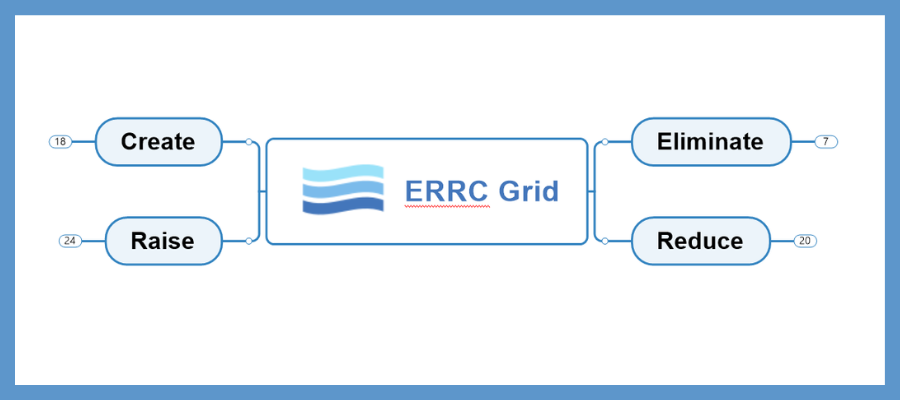
Entrepreneurs: How can you unlock competitive advantage in today’s uncertain world? One way to do that is to challenge our existing assumptions about value creation, using a simple tool like the ERRC grid.
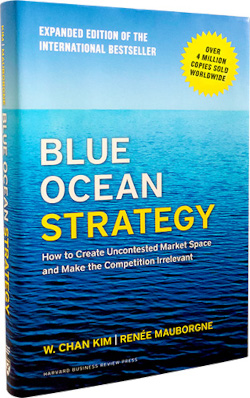 The Eliminate-Reduce-Raise-Create (ERRC) Grid was developed by Chan Kim and Renée Mauborgne as part of their Blue Ocean Strategy toolkit. It challenges organizations to brainstorm ways to simultaneously improve along four dimensions:
The Eliminate-Reduce-Raise-Create (ERRC) Grid was developed by Chan Kim and Renée Mauborgne as part of their Blue Ocean Strategy toolkit. It challenges organizations to brainstorm ways to simultaneously improve along four dimensions:
Eliminate: Which factors that your industry has long competed on (and therefore takes for granted) should be eliminated? Examples could include existing distribution methods, production methods or eliminating a pain point for an underserved customer segment.
Reduce: Which factors that your industry has long competed on should be eliminated? Examples could include moving from a full-service customer support model to self-service, simplifying product options to streamline the buying process or reducing your reliance on a raw material that is becoming harder or more expensive to procure.
Raise: Which factors should be raised well above your industry’s standard? Examples could include offering a bespoke or luxury version of your product where nothing like this has existed before or creating a new market space by unlocking a new application for your product.
Create: Which factors have your industry never offered that should be created? These could include adapting existing product or service types from an unrelated industry or reimagining the customer buying experience in a new way or offering customization options where none previously existed.
According to the authors, this simple framework can “help you to challenge an industry’s strategic logic and business model to arrive at blue ocean moves that break the trade-off between differentiation and low cost.”
Unpacking this idea further, here is the definition of a blue ocean strategy:
“The simultaneous pursuit of differentiation and low cost to open up a new market space and create new demand. It is about creating and capturing uncontested market space, thereby making the competition irrelevant. It is based on the view that market boundaries and industry structure are not a given and can be reconstructed by the actions and beliefs of industry players.”
Think different – with a mind map
What if you used the ERRC grid with a mind map? What advantages could that give you? Let’s explore:
- It could help you brainstorm, capture and expand your thinking about new possibilities, using the power of association.
- As you develop your thinking along these four dimensions, it would enable you to see connections between the ideas you’ve brainstormed – which could become stepping stones for additional ideas.
- When you’re done brainstorming ideas and possibilities, you could use symbols or icons to prioritize them based on several sets of criteria (e.g., ease of implementation, cost of implementation, resources required)
- You could attach any supporting research or information via file attachments or URL links.
Making the ERRC grid actionable
One of the challenges with this framework is that the authors give us four ways to think about differentiation and future possibilities. But they don’t give us any hints on how to get there.
As I gave it some deep thought, I realize that several elements of the SCAMPER brainstorming technique could be adapted into thinking prompts to enhance the ERRC matrix and make it more actionable. So I created a mind map that lists the four elements of the matrix as first level topics, and then selected appropriate prompts from my Ultimate SCAMPER Mind Map to serve as idea starters. To ensure that the prompts are readable, I’ve included screen shots of it with each branch open.
(click on the images below to view larger versions)
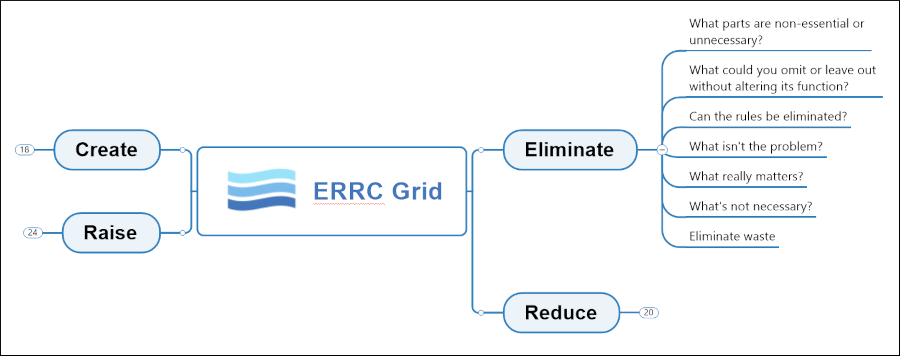

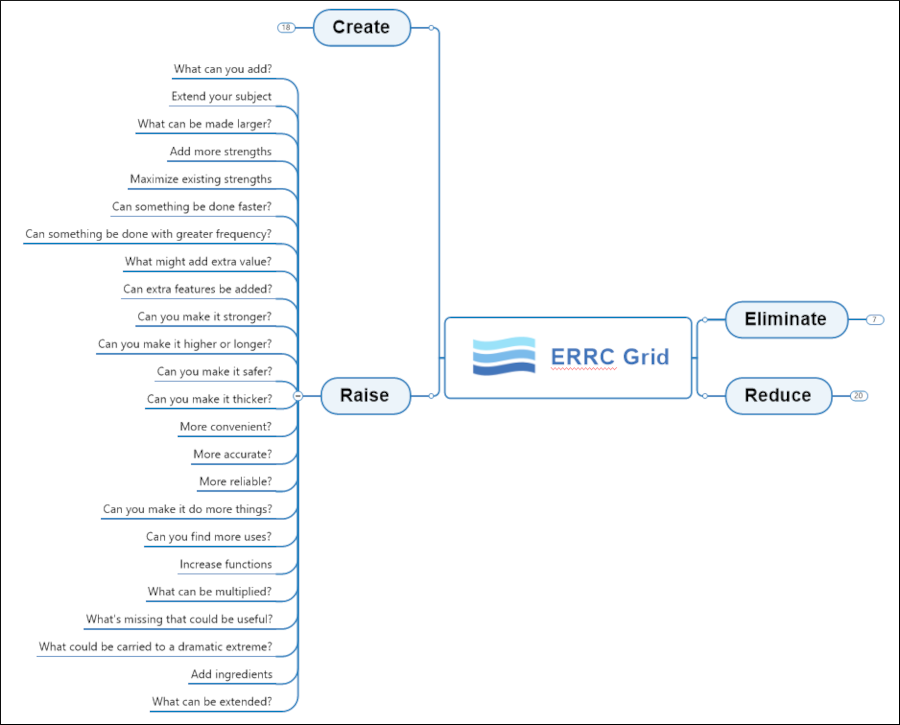
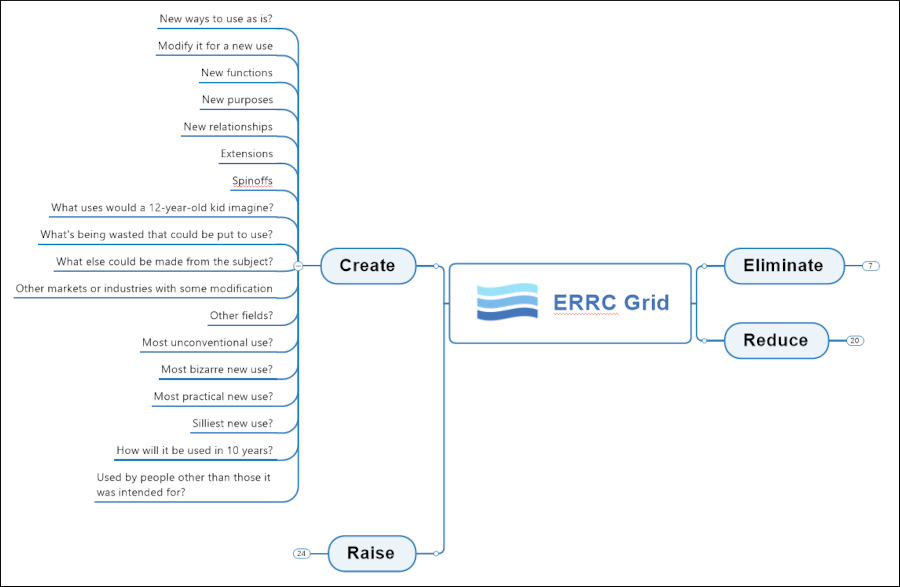
I hope you find this tool valuable to consider future possibilities and opportunities for your business or side gig!

 Logging you in...
Logging you in... Loading IntenseDebate Comments...
Loading IntenseDebate Comments...
Howard Abel · 126 weeks ago
I loved your Scamper adaptation of the Blue Ocean ERRC grid.
Would it be possible to get a copy of your actual Scamper Map?
Thank you for your amazing content. It's because of you that I got into mind mapping several years ago.
Howard
Chuck Frey · 126 weeks ago
I included the link in the article. It's a Mind Mapping Insider resource, so you'll need to sign up to get access to it. It''s up to you how long you decide to stay. It's month-to-month with no obligation.
Howard Abel · 125 weeks ago
You are welcome. I will sign up now.
Keep up the good work!
Howard